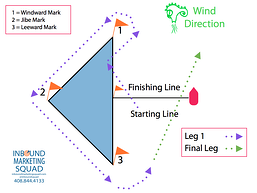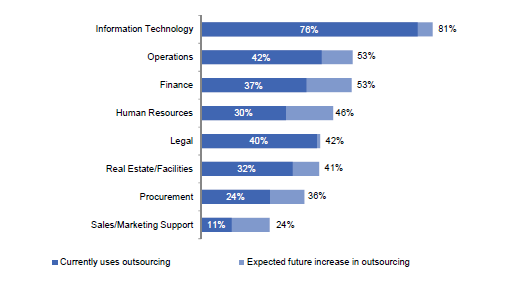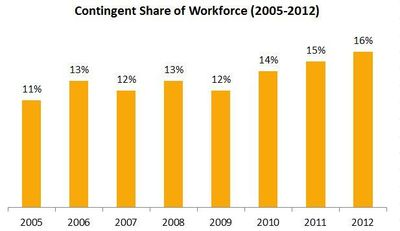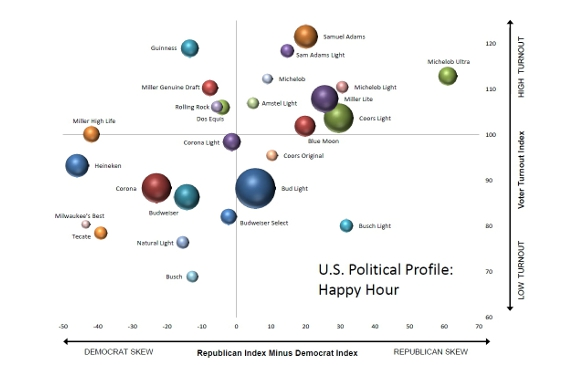The threat from outside and the opportunity within
The beauty of inbound marketing is that it's simple. Sure, there are fine points and best practices. But its power as a market equalizer is that any company can do it - and do it well. Not all do, of course, and conversely a few do it brilliantly.Although simple, it's not easy. It takes a firm senior executive strategic commitment because it demands a lot of work and patience. And often companies are hesitant to undertake too many simultaneous strategic initiatives. That's sensible. But if the "Devil is in the details," then the risk/reward is in selecting the one or two concurrent foci.
Globalization of your business and of your inbound marketing specifically, should be on that short list.
Two parallel trends provide compelling justification for that strategic focus.
First is the threat from outside. China is awakening to the compelling opportunity offered by inbound marketing.
Second is the demographic reality of domestic US consumer evolution. One of every 2 babies born in the US now is Latino. Marketing to them requires nuanced approaches and content which will differ from your baseline.
The inbound threat
 The Chinese are coming...will you be ready this time? Having lost much of the low-cost manufacturing advantage upon which they built their amazing decade of export growth, Chinese companies are awakening to the need and opportunity to market effectively to US consumers.
The Chinese are coming...will you be ready this time? Having lost much of the low-cost manufacturing advantage upon which they built their amazing decade of export growth, Chinese companies are awakening to the need and opportunity to market effectively to US consumers. Sure, like most innovation evolutions, the initial quality will be low and execution will be clumsy. But eventually they will learn to excel. And other developing markets will follow suit. Soon your prospects will be awash in content from global sources. Competition will intensify.
You've got the opportunity to solidify your "first mover" advantage, though, with the focused, immediate and ongoing application of inbound marketing best practices. The key is to stop dabbling and start executing! (Download PR Newswire's report in English or Chinese here.)
Can you even talk to 50% of your market?
 The statistics are clear. Half of the babies born in the US today are Latino. And while the future population distribution will reflect that trend, even today Latinos represent a substantial body of consumption clout. (We love for you to take our quick survey on your experience/thoughts regarding Latino content marketing.)
The statistics are clear. Half of the babies born in the US today are Latino. And while the future population distribution will reflect that trend, even today Latinos represent a substantial body of consumption clout. (We love for you to take our quick survey on your experience/thoughts regarding Latino content marketing.) Now the concept of Latino Marketing isn't novel. A few thought leaders (mostly consumer packaged goods) companies have developed marketing for Hispanic communities. But it is still quite early, and the efforts are lacking the nuance required for success.
The reality is, there is no monolithic "Latino" community. Consumers with different dialects (not to mention different languages - Spanish vs. Portuguese), vastly different cultures and traditions, biases and prejudices and consumption habits are often lumped into a single group.
But understanding how to market to the statistically important and distinct groups requires an intimacy and breadth of cultural knowledge that is absent in most American companies. And if the recent article in Portada is correct, "Hispanic Content Marketing (may be) set to explode." will the explosion damage or propel your efforts?
I would contend that the best, and perhaps only way you can develop the expertise imperative for successful domestic growth in the coming decades is actually to begin to market and sell throughout Latin America. At Consilium we believe that one of the most underappreciated benefits of exporting is the opportunity to learn lessons to be applied to your domestic market. And this is a perfect example.
The global opportunity is even bigger
If you have any substantive inbound marketing today you are accustomed to receiving a large number of international leads. Experience tells me that while you covet domestic leads, scoring them, nurturing them and hopefully converting them, you probably simply ignore the international leads.What a shame! In an environment of very slow domestic growth, opportunities in developing markets are particularly compelling. Even with your existing program you'll start to identify pockets of compelling opportunity. Don't waste those leads! Find someone with real international sales and global business development expertise that can help you manage global growth while mitigating risks and maximizing the potential.
But while you're at it, maybe you should step up into full fledged international inbound marketing - elevate your domestic game to embrace global opportunities!
And inbound marketing agencies have an opportunity. Work dilligently with your clients to position their inbound marketing and help them understand the competitive advantage, and defense bulwark that simultaneously creates. And then work with them to develop the nuanced and localized multilingual & cultural content required to cement their success domestically - not just with some of their prospects, but with all.
About the Author: Ed Marsh is co-founder of Consilium Global Business Advisors, an international marketing consulting agency focused on developing strategic global business development and channel programs.

 With the industry evolving on a daily basis, it’s hard to keep up. That’s why curiosity and a desire to learn are two of the best traits you can acquire as a modern marketer.
With the industry evolving on a daily basis, it’s hard to keep up. That’s why curiosity and a desire to learn are two of the best traits you can acquire as a modern marketer.
 I recently finished reading a 2-part blog post by Mary Planding, owner of
I recently finished reading a 2-part blog post by Mary Planding, owner of  What do golf legend Jack Nicklaus, basketball great Michael Jordan and decorated Olympian Michael Phelps all have in common? They have all embraced
What do golf legend Jack Nicklaus, basketball great Michael Jordan and decorated Olympian Michael Phelps all have in common? They have all embraced  Let's be honest. Using HubSpot and practicing inbound marketing isn't the easy solution. It takes practice, it takes training and it takes hard work. It's alot easier to buy some ads, cross our fingers and hope the phone rings. But we know that's not the right advice for our clients.
Let's be honest. Using HubSpot and practicing inbound marketing isn't the easy solution. It takes practice, it takes training and it takes hard work. It's alot easier to buy some ads, cross our fingers and hope the phone rings. But we know that's not the right advice for our clients.




